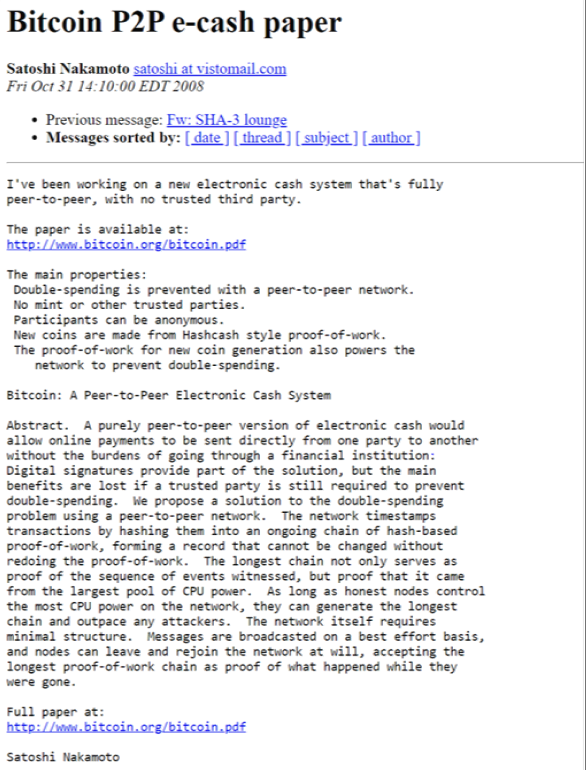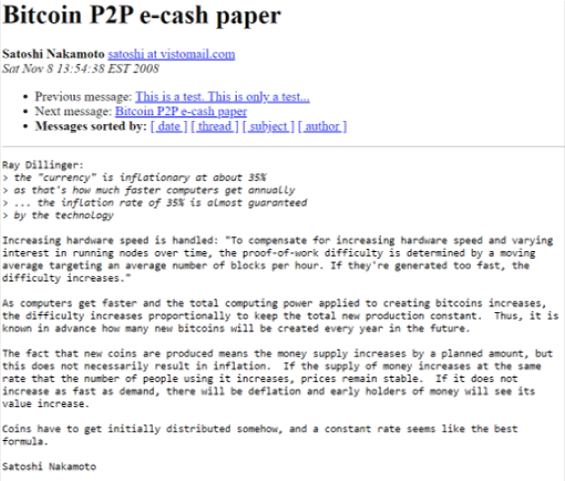
The Bitcoin Halving is a process whereby the reward to Bitcoin miners is halved, which accordingly, has a significant impact on the supply and demand of Bitcoin.
The domain “bitcoin.org” was registered on 18 August 2018. Thereafter, on 31 October 2008, a whitepaper titled, “Bitcoin: A Peer-to-Peer Electronic Cash System” was published under the pseudonym “Satoshi Nakamoto”. This brought together a number of advancing areas of cryptography, privacy and distributed platforms – to rethink the idea of “e-money”.

Bitcoin can be seen as an alternative to central authorities and intermediaries, emerging as a reaction to the 2007-2008 Financial Crisis. It resembles gold in that there is a finite and diminishing supply of new bitcoin units, capped at 21 million, contrasting with today’s traditional inflationary fiat currencies, which have no such supply ceiling. In the case of fiat currencies, central banks can adjust the currency supply to influence economic conditions. For example, to stimulate growth, a central bank might increase circulation by purchasing securities from banks.

In addition to the total ceiling on the number of bitcoin units to control the supply of Bitcoin, Satoshi Nakamoto also integrated a halving mechanism into the Blockchain’s protocol, effectively to control inflation. The Bitcoin Halving is determined by comparing the current block height with the block height at which a Halving is next due to take place. Bitcoin blockchain blocks are mined at different speeds, as the mining process is unknown in terms of the time it will take for the next block to be mined. That said, every fortnight, the average block creation time is checked and adjusted through a “difficulty level” in order to bring average speeds back to c. 10 minutes. This is why the fourth Halving took place on 19th April 2024, as widely expected.
| Date | Block height | Block reward reduction |
| First halving | 210,000 | 50 BTC -> 25 BTC |
| Second halving | 420,000 | 25 BTC -> 12.5 BTC |
| Third halving | 630,000 | 12.5 BTC -> 6.25 BTC |
| Fourth halving | 840,000 | 6.25 BTC -> 3.125 BTC |
Each Halving event forces Bitcoin miners to adapt to a lower-margin environment, who are impacted by decreasing rewards for their activities, whilst keeping their operational costs down. It has significant impact on the global cryptoasset ecosystem.
Possible impacts of the Halving event
- Maintaining scarcity of bitcoins
- Impacting the overall perception of the cryptoasset market – the slight reduction in supply of new bitcoins from prior Halving events created a supply shortfall (based on steady or increased demand). This in turn creates an upward pressure on prices, not just for the Bitcoin market, but the broader cryptoasset market.
- Increasing security threats to the Bitcoin network. The reduction in profitability can result in some miners pulling out of the activity. This in turn makes the network more susceptible to a 51% attack.
- Forcing miners to adopt a better environmental footprint – as the reward is halved, miners are incentivised to seek more energy-efficient techniques, with lower energy costs, in order to stay profitable.

In the case of the fourth Halving, the crypto asset has continued to defy warnings that the event could trigger a fire sale, rallying from a price of under $60,000 per bitcoin to around $65,000. Instead, bitcoin miners and analysts are now dealing with the aftermath which has seen bitcoin transaction fees rise to their highest levels yet.
